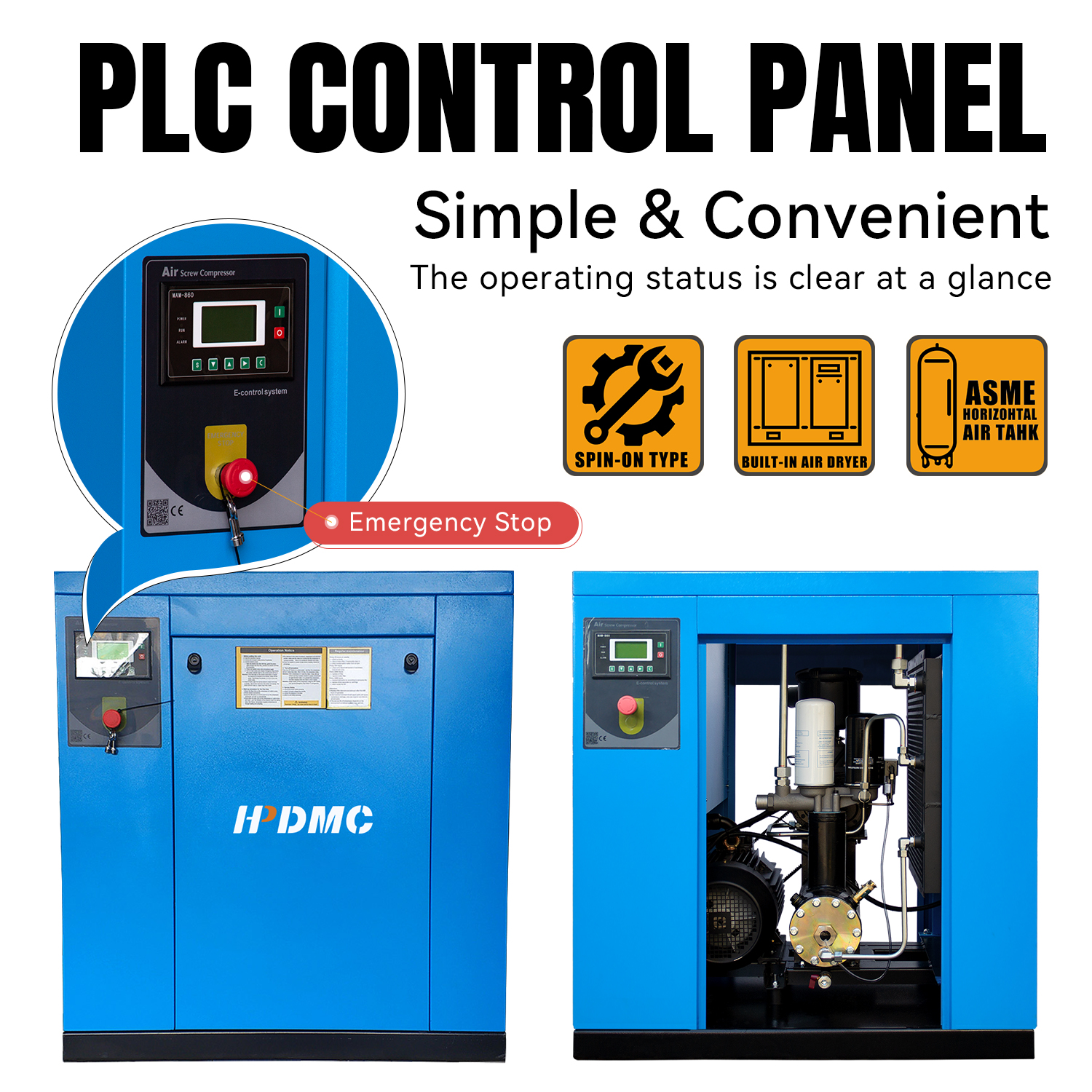In the bustling industrial landscapes and busy workshops across the United States, compressors are essential workhorses powering a wide range of operations. However, the noise they generate can pose a significant threat to the health and well-being of workers. The Occupational Safety and Health Administration (OSHA) in the US has set strict noise exposure limits to protect employees, and understanding and adhering to these regulations is crucial for employers. Additionally, implementing effective compressor noise reduction solutions not only ensures compliance but also creates a more comfortable and productive work environment. HPDMC offers a range of low-noise compressors designed to meet these needs, providing practical and efficient noise reduction without sacrificing performance.
Understanding OSHA Noise Exposure Limits (29 CFR 1910.95)
OSHA's noise regulations are based on the principle that excessive noise exposure can lead to permanent hearing loss and other auditory problems. According to 29 CFR 1910.95, the permissible exposure limit (PEL) for noise in the workplace is defined as an 8-hour time-weighted average (TWA) of 90 decibels (dB). However, the exposure time allowed decreases as the noise level increases. For example, at 92 dB, the maximum allowable exposure time drops to 6 hours, and at 100 dB, it is reduced to just 2 hours. If the noise level reaches 115 dB, the exposure time is limited to 15 minutes.
These limits are not just arbitrary numbers; they are based on extensive research into the effects of noise on human hearing. Prolonged exposure to noise levels above the PEL can cause noise-induced hearing loss (NIHL), which is a preventable but irreversible condition. In workplaces where compressors are in operation, ensuring that the noise levels remain within the OSHA-specified limits is not only a legal requirement but also a moral obligation to protect employees.
Effective Compressor Noise Reduction Solutions
Soundproof Enclosures
One of the most effective ways to reduce compressor noise is by using soundproof enclosures. These enclosures are designed to block, absorb, and dampen the sound waves generated by the compressor. When selecting a soundproof enclosure, several factors need to be considered.
Material Selection: High-density materials such as thick metal sheets or specialized acoustic panels are ideal for blocking sound. Acoustic foams and fiberglass insulation are often used inside the enclosures to absorb sound waves, reducing the noise that escapes. For example, an enclosure lined with 2-inch thick fiberglass insulation can significantly reduce the noise output of a compressor.
Ventilation: While blocking sound is important, proper ventilation must also be maintained to prevent the compressor from overheating. Enclosures should be designed with strategically placed vents and fans that allow for air circulation while minimizing noise leakage. Some advanced enclosures feature noise-reducing ventilation systems that use baffles or silencers to direct the air flow without compromising on noise reduction.
Pipe and Duct Design
The design of pipes and ducts connected to the compressor can also have a significant impact on noise levels. Vibration from the compressor can travel through the pipes and be radiated as noise. To mitigate this, flexible hoses can be used to connect the compressor to the fixed piping system. These hoses absorb vibrations, preventing them from being transmitted through the pipes.
Proper bracing and support of pipes are also essential. Pipes that are not adequately supported can vibrate and generate additional noise. Installing pipe hangers and supports at regular intervals helps to reduce these vibrations. Additionally, the use of elbows and fittings with smooth curves instead of sharp bends can reduce turbulence in the air flow, which in turn reduces noise generation.
Regular Maintenance
A well-maintained compressor is less likely to generate excessive noise. Worn-out components such as belts, bearings, and valves can cause vibrations and increased noise levels. Regularly inspecting and replacing these components as needed can keep the compressor running smoothly and quietly. Lubricating moving parts with the appropriate lubricants also helps to reduce friction and noise. For example, replacing a worn-out belt can reduce a significant amount of noise, as a loose or damaged belt can cause uneven rotation and vibrations.

HPDMC's Low-Noise Compressor Series: A Solution for US Workplaces
HPDMC is committed to providing high-quality compressors that not only deliver excellent performance but also meet the stringent noise reduction requirements of US workplaces. Our low-noise compressor series, such as the Latest Generation 15-HP Oil-Injected G Series, stands out for its remarkably quiet operation.
Engineered with advanced noise-dampening technology, this compressor operates at noise levels far below what is typically expected from industrial-grade equipment. Its innovative design minimizes mechanical vibrations, and the carefully crafted housing acts as an effective sound barrier. As a result, it produces noise levels well within the OSHA-recommended limits for continuous operation, even in the most noise-sensitive work environments. Whether it's a workshop adjacent to a residential area or a facility where clear communication among employees is essential, this low-noise compressor ensures that operations can continue smoothly without the distraction and potential harm of excessive noise.
By choosing HPDMC's low-noise compressors, employers can ensure compliance with OSHA noise regulations without the need for extensive and costly additional noise reduction measures. Our compressors not only protect the hearing health of employees but also contribute to a more pleasant and productive work atmosphere.
In conclusion, compressor noise reduction is a critical aspect of maintaining a safe and healthy workplace in the US. By understanding OSHA noise regulations, implementing effective noise reduction solutions, and choosing reliable low-noise compressors like those offered by HPDMC, employers can create a workplace that is both compliant and comfortable for their employees. Explore HPDMC's full range of low-noise compressors and take the first step towards a quieter, safer, and more productive work environment.
